Text by Christa Swanepoel
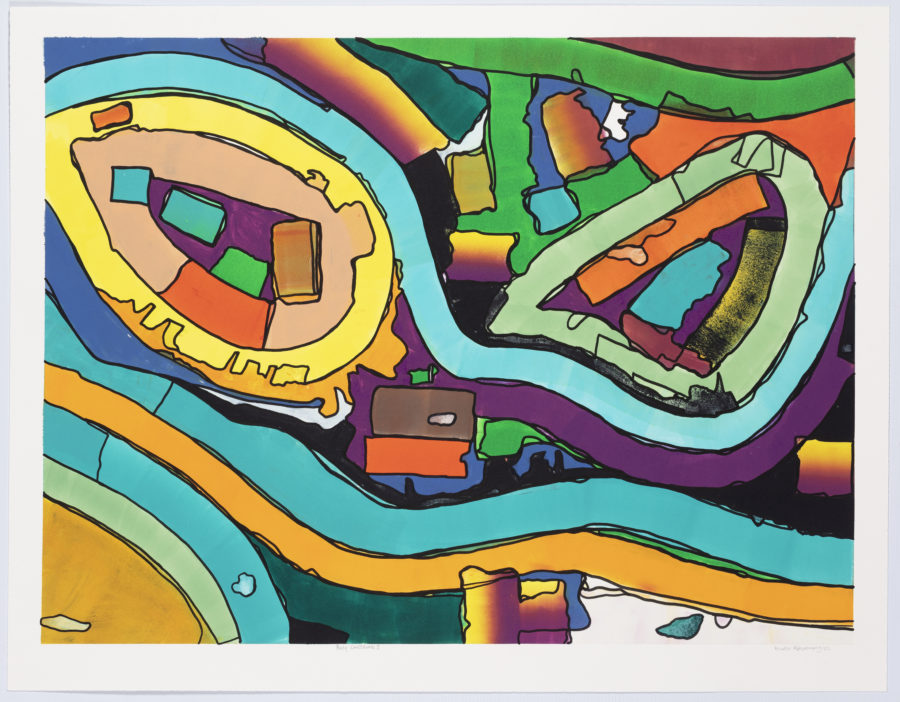
BUSY CROSSROADS I, 2022
Oil based Monotype and handwork with Montana Acrylic water-based marker
67.2 x 86cm
Khotso Motsoeneng is one of the three artists whose works form part of the Parallel Process exhibition, which is the product of a collaboration between David Krut Projects and FORMS Gallery. This exhibition includes unique works and monotypes by Khotso Motsoeneng, Adrian Fortuin and Matty Monethi.
In March 2022, David Krut Projects and FORMS Gallery began a collaboration centering around the printmaking processes and possibilities afforded by the David Krut Workshop (DKW). Three artists represented by FORMS Gallery were invited to spend time experimenting and making monotypes in the workshop, under the guidance of DKW’s team of expert printmakers.
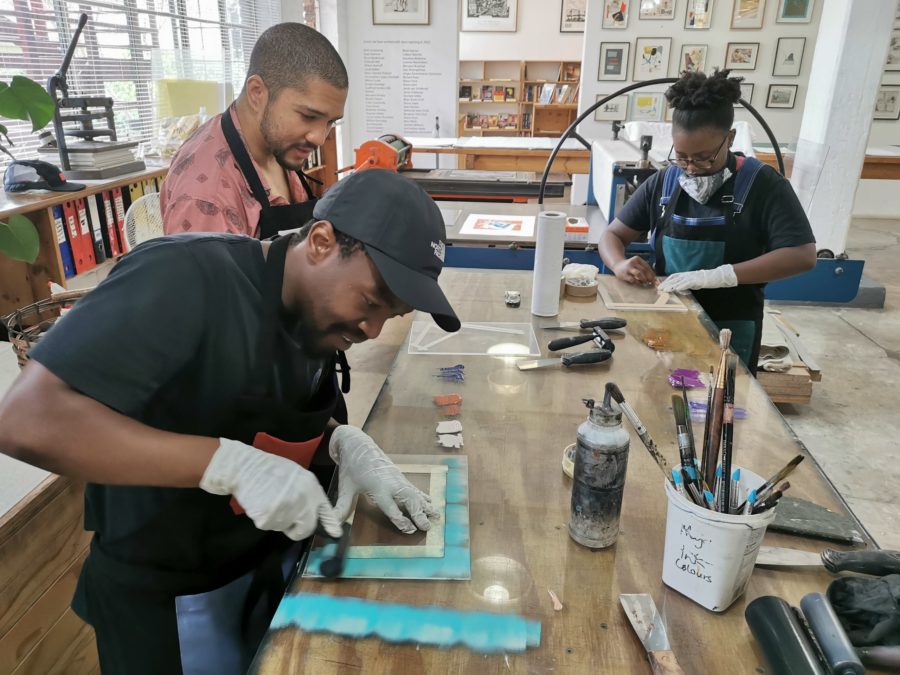
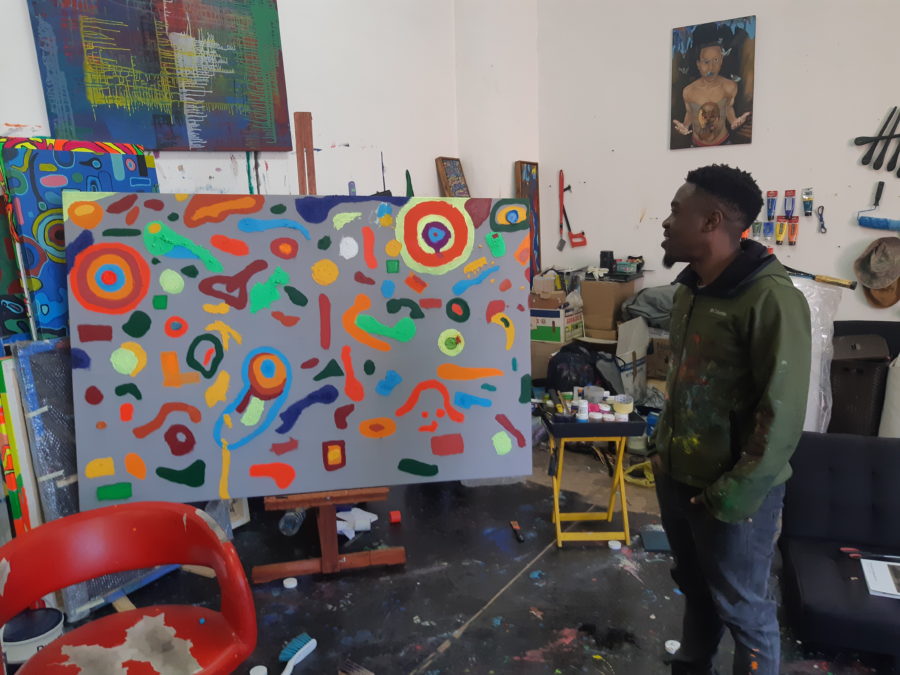
Khotso Motsoeneng, Adrian Fortuin and Matty Monethi on the first day at the David Krut Workshop.
Along with a series of monotypes, Khotso also created unique paintings for the Parallel Process exhibition. Here Khotso is looking at a work in progress.
Khotso Motsoeneng (b. 1993, Free State) is a self-taught painter and printmaker whose training in photography developed his keen eye for colour and form. During his two weeks at DKW he created a series of oil-based and water-based monotypes which will be featured in the Parallel Process exhibition.
Khotso Motsoeneng’s practice seeks out an abstract formal language which brings together his keen observation of nature and intuitive perspectives on the relationship between different colours and emotions. He is particularly inspired by woodgrain as a trace of natural processes and looks to plant life as a metaphor for human development.
Khotso’s background of growing up in the Free State has a great influence on some of the works that he created for this series. He is also inspired by patterns, colour, shape, nature and texture and allows his intuition to guide him in using these elements to create both paintings and works on paper.
During his time at DKW, and with the help of expert DKW printmaker Sarah Judge, Khotso started by creating oil-based monotypes, and then as he learned more about the monotype process, he branched out into creating both oil- and water-based monotypes and adding elements of collage, chine collé and handwork.
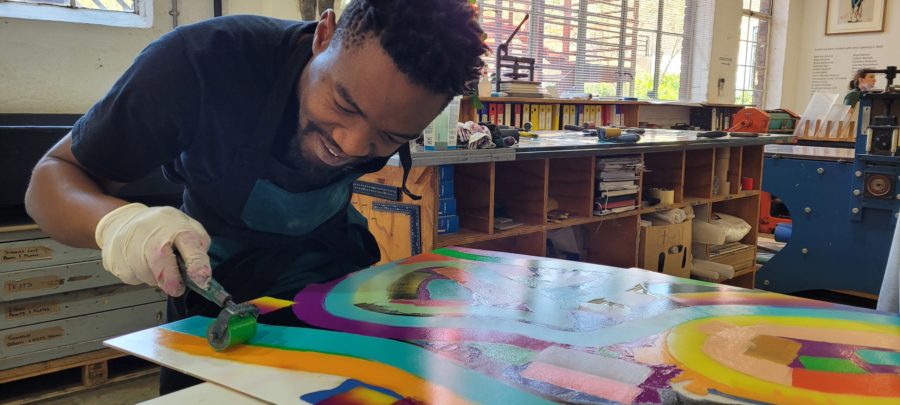
Khotso is seen preparing a perspex to be printed by using various sizes of brayers and brushes to apply colour fields.
In a podcast interview with David Krut Projects team member Britt Lawton, Khotso expresses that the atmosphere at the workshop invoked a sense of “home” in him. He felt a sense of familiarity with the DKW team, as if he had known them for a long time, and this feeling of familiarity, comfort and home inspired the works that he created during his stay. He says that he really enjoyed learning about new art-making methods from the DKW team: working with watercolour and oil monotype, layering, collage, discovering and playing with new textures, and seeing how his style translated into print are some of the experiences that he says were the most valuable to him. He really relished seeing how his prints came out after going through the press; the process of applying ink to the perspex plate and witnessing how the colours translated onto the paper after being printed was very interesting to him.
Khotso challenges himself to observe his surroundings deeply, constantly in search of shapes and patterns that inspire him. Some of the unexpected results gotten from the monotype process, such as accidentally making smudges he says, guided his intuition on how to engage further with the prints. Khotso finds inspiration for pattern and shape in things like the grain of wood, which he works with often, as well as messes of paint on the studio floor. He captures these fascinating observations of shape and pattern in his work in various ways: some of the shapes that are seen are the result of tracing, while others come directly from his imagination.
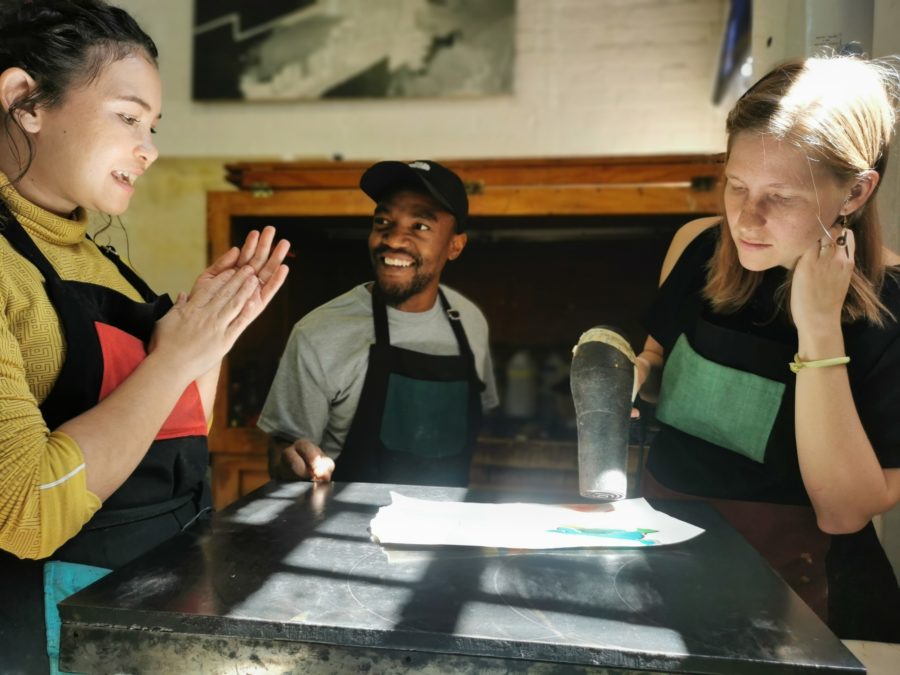
Sharing ideas with the DKW team was a wonderful learning experience for Khotso. Here he is seen with printer Kim-Lee Loggenberg (left) and Sarah Judge (right) experimenting with new ways of using puff paint.
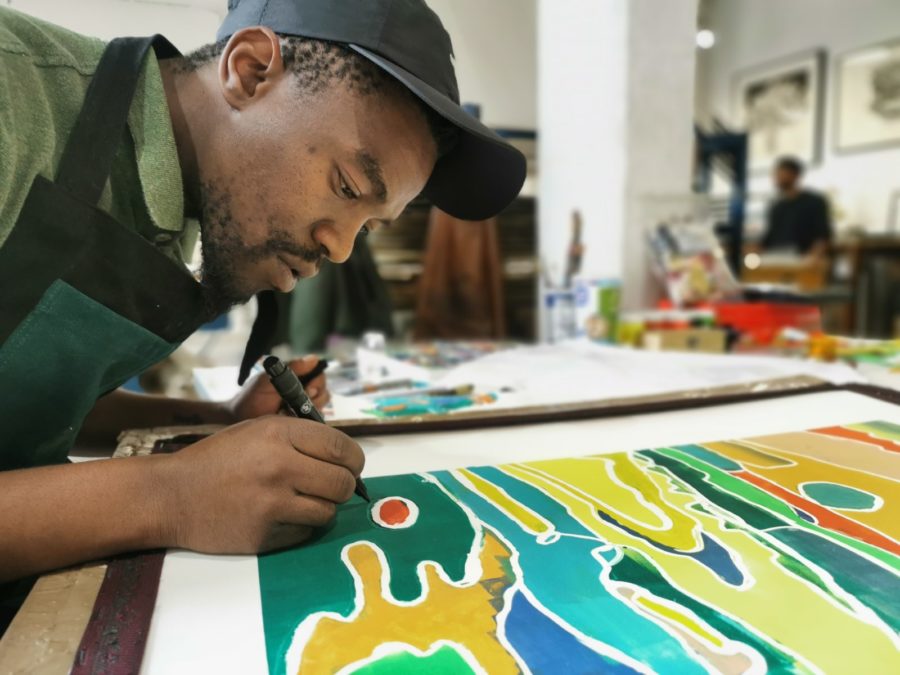
After layering the various colour fields, he then very patiently and intricately outlines the colours with black acrylic marker, China Makers and Woodies.
To create the monotypes, Khotso starts by applying fields of colour onto the perspex plate using various sizes of brayers and paint brushes. His choice of colours he uses is largely intuition-based. He enjoys holding and feeling the tins and tubes of ink, allowing himself to be drawn in to a certain colour. He is interested in the meaning and symbolism that different cultures attribute to certain colours, and he strives to evoke emotion and feeling in viewers of his work using colour.
After layering the various colour fields, he then very patiently and intricately outlines the colours with black acrylic marker, China Makers and Woodies. Many of his works contain characteristic outlines around the various shapes, and Khotso says that by doing a monotype on prespex he was also able to erase lines with an earbud before printing. “It was like working in reverse,” he says in the podcast.
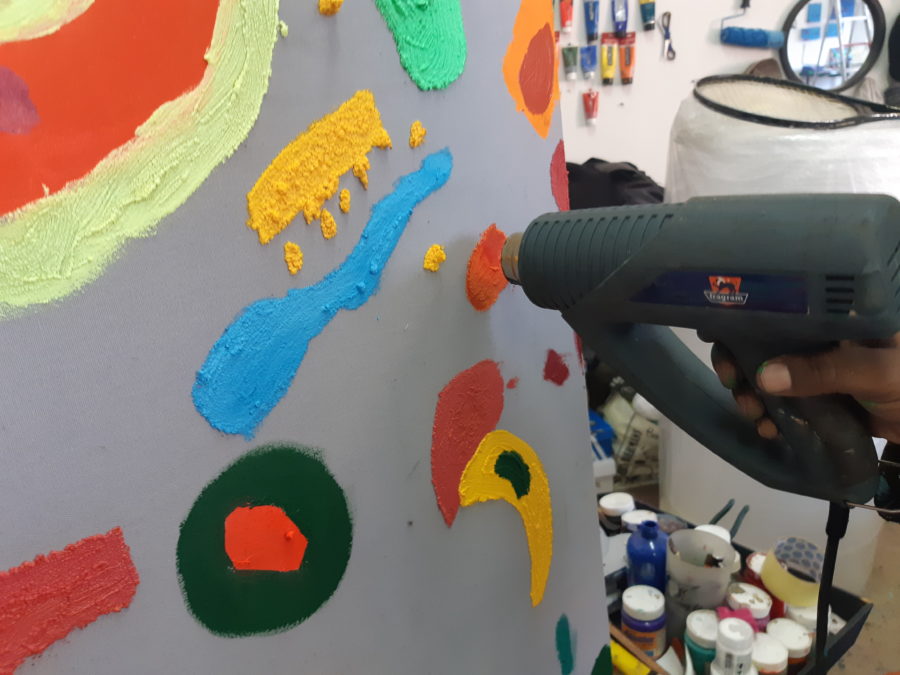
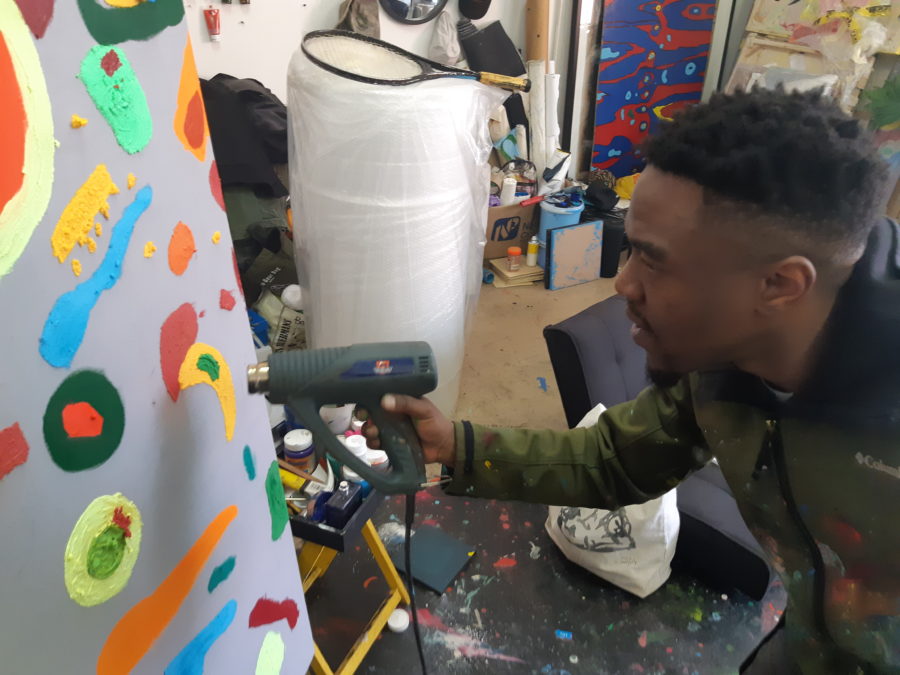
Khotso uses a heat gun to activate the puff paint on the surface of his painting, quite literally making the colours pop!
Viewers are encouraged to engage with and question the materiality of these works. Khotso does so by using several elements, such as puff paint which he activates with a heat gun, to create an array of various textures. His use of wide variations of texture and colour makes viewing his works an almost multisensory experience, enticing the viewer to want to touch the surface of the works.
Khotso hopes that in future projects he can engage with the viewer even further by introducing even more tactile and interactive elements. He aspires to create an installation where visitors can be immersed in interacting with and moving around various colourful and textured pieces made from a wide variety of materials such as puff paint and wool, to name but a few. For Khotso, the range of possibilities in art is endless and the future is brightly coloured.


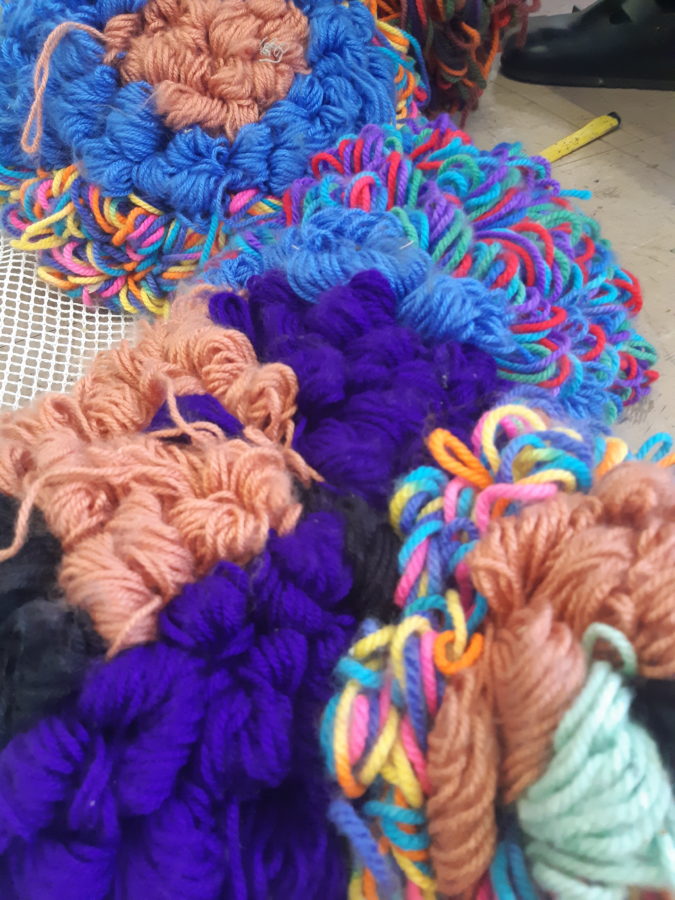
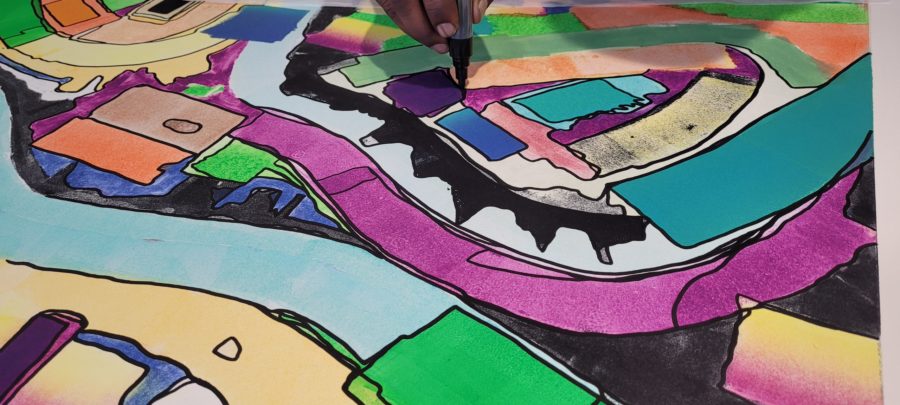
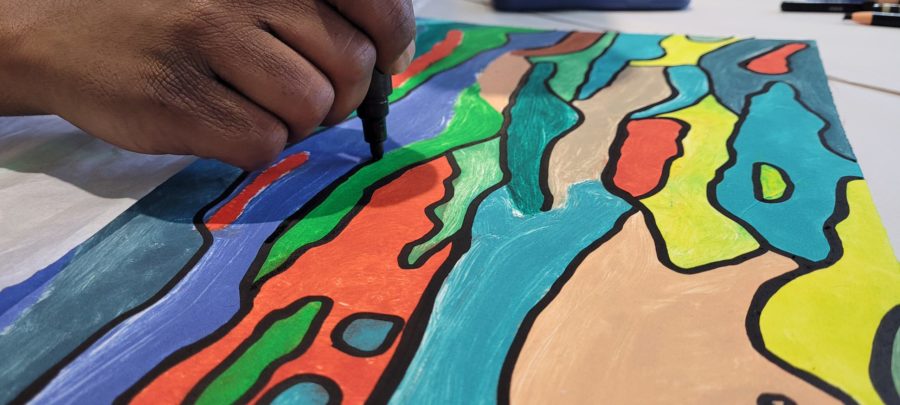
In future projects, Khotso hopes to incorporate colourful, textured installations that people can touch and interact with which will be made of various materials such as wool and puff paint.